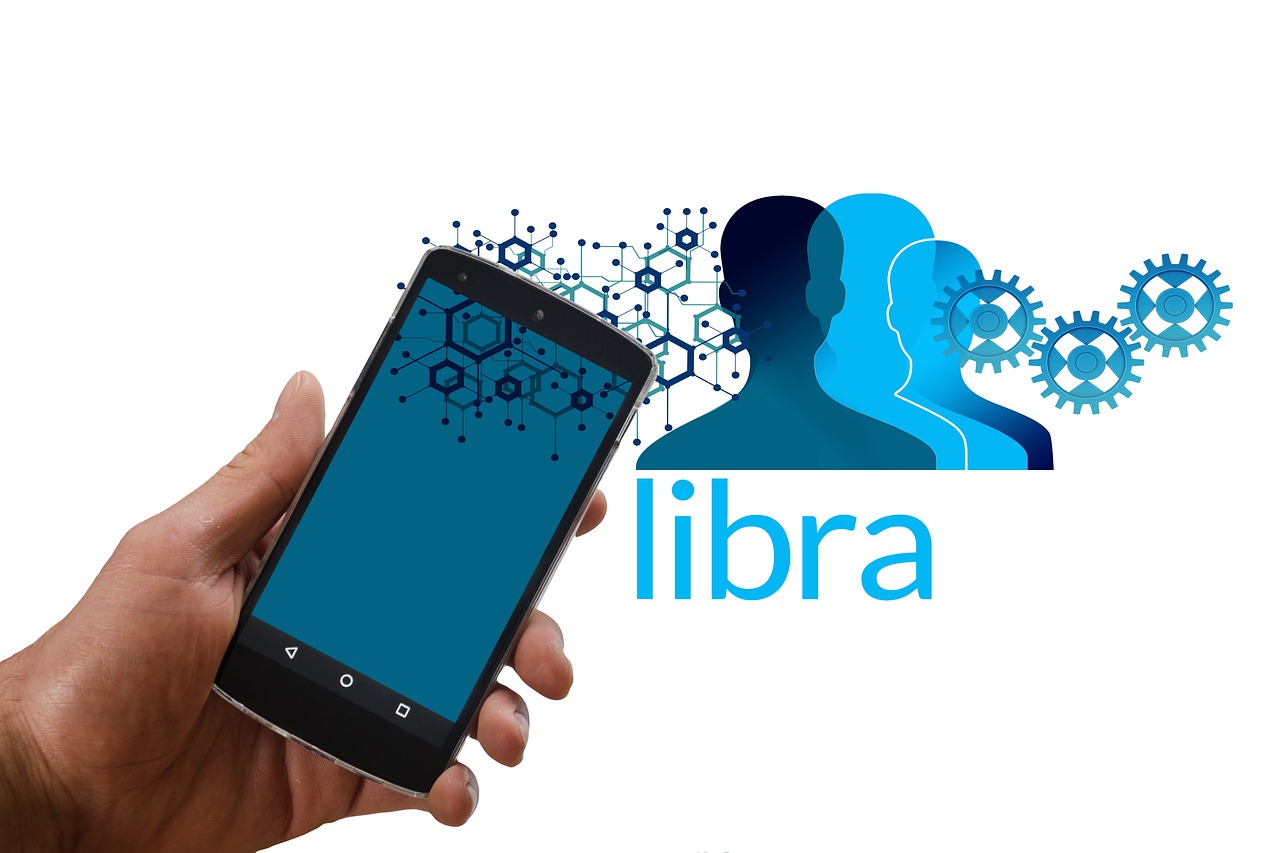Kaspa - A New Era in Blockchain Speed
In the ever-evolving world of blockchain technology, speed and efficiency are becoming paramount. Enter Kaspa, a revolutionary blockchain that is set to redefine our expectations of transaction speeds and scalability. Imagine a world where transactions occur almost instantaneously—this is not just a dream but a reality that Kaspa is working towards. With its innovative architecture and unique blockDAG structure, Kaspa is paving the way for a new era in blockchain technology.
At its core, Kaspa is designed to tackle the limitations faced by traditional blockchains, such as Bitcoin and Ethereum. These older systems often struggle with long transaction times and scalability issues, especially during peak usage periods. Kaspa, however, employs a parallel processing mechanism that allows multiple transactions to be processed simultaneously. This means that instead of waiting for a single block to be mined, users can enjoy almost instantaneous confirmations of their transactions.
But what does this mean for everyday users? Well, think about it: when you send money to a friend or purchase a digital asset, you want it to happen in the blink of an eye—without the frustration of waiting. Kaspa aims to provide just that. By leveraging its unique design, it not only enhances the speed of transactions but also significantly reduces costs associated with them. This is particularly important in an age where digital transactions are becoming increasingly common.
Moreover, Kaspa's scalability is impressive. As the network grows, it continues to maintain its speed without compromising performance. This scalability is crucial for the future of blockchain technology, especially as more industries begin to adopt it. The potential applications are vast, ranging from finance to supply chain management, and even gaming. Kaspa's architecture allows it to support a higher volume of transactions, making it an attractive option for businesses and developers alike.
In summary, Kaspa is not just another blockchain; it represents a significant leap forward in how we think about speed and efficiency in digital transactions. As we delve deeper into its architecture, transaction speeds, real-world applications, and community support, it becomes clear that Kaspa is poised to make a lasting impact on the blockchain landscape.
- What is Kaspa? Kaspa is a blockchain technology that utilizes a unique blockDAG structure for faster and more efficient transaction processing.
- How does Kaspa improve transaction speeds? By allowing parallel processing of transactions, Kaspa can handle multiple transactions at once, leading to near-instant confirmations.
- What industries can benefit from Kaspa? Industries such as finance, supply chain, and gaming can leverage Kaspa's rapid transaction capabilities for improved efficiency and user experience.
- Is Kaspa open source? Yes, Kaspa is an open-source project that encourages contributions from developers around the world.
- What are the challenges faced by Kaspa? Some challenges include network stability and the need for wider adoption to fully realize its potential.

Understanding Kaspa's Architecture
In the ever-evolving world of blockchain technology, Kaspa stands out with its innovative architecture that fundamentally changes how transactions are processed. Unlike traditional blockchains that rely on a linear chain of blocks, Kaspa employs a blockDAG (Directed Acyclic Graph) structure. This unique design allows multiple blocks to be created and confirmed simultaneously, paving the way for unprecedented speed and scalability.
Imagine a busy highway where cars can travel in multiple lanes without being stuck in traffic. Similarly, Kaspa's architecture enables transactions to occur in parallel rather than sequentially. This means that as more transactions come in, the network can handle them without delays, significantly enhancing the overall user experience. The ability to process transactions concurrently is a game-changer, especially in an era where speed is paramount.
One of the standout features of Kaspa's architecture is its GhostDAG protocol. This protocol ensures that even if multiple blocks are created at the same time, the network can effectively determine the most valid blocks and maintain consensus without sacrificing efficiency. In essence, it allows for a more fluid and dynamic transaction process. The GhostDAG protocol not only boosts speed but also enhances security by reducing the chances of forks—situations where two blocks are created simultaneously, potentially causing confusion in the network.
To give you a clearer picture, let’s break down the key components of Kaspa's architecture:
- BlockDAG Structure: Enables multiple blocks to be processed at once.
- GhostDAG Protocol: Maintains consensus and security by managing block validation effectively.
- High Scalability: Supports an increasing number of transactions without compromising speed.
Additionally, the architecture is designed to be developer-friendly. With an open-source foundation, developers can easily contribute to its evolution, enhancing features and security. This collaborative approach not only fosters innovation but also creates a robust ecosystem where ideas can flourish. As more developers get involved, the potential for new applications and improvements expands exponentially.
In summary, Kaspa's unique architecture is a significant leap forward in blockchain technology. By leveraging the blockDAG structure and the GhostDAG protocol, Kaspa not only achieves remarkable transaction speeds but also sets the stage for a more scalable and secure blockchain future. This innovative approach could very well redefine how we interact with blockchain networks and open up new possibilities across various industries.

Transaction Speed Comparison
When it comes to blockchain technology, one of the most critical factors that can make or break a platform is its transaction speed. With the rise of digital currencies and decentralized applications, users are increasingly demanding faster and more efficient networks. Enter Kaspa, a revolutionary blockchain solution that stands out in the crowded field of cryptocurrencies. But how does it stack up against other leading blockchains like Bitcoin and Ethereum? Let's dive into the numbers and see how Kaspa’s speed can redefine user experience.
To put things into perspective, traditional blockchains like Bitcoin and Ethereum process transactions sequentially, which can lead to significant delays, especially during peak usage times. For instance, Bitcoin averages around 7 transactions per second (TPS), while Ethereum can handle approximately 30 TPS. In contrast, Kaspa's innovative blockDAG architecture allows it to achieve a staggering thousands of transactions per second, depending on network conditions. This means that while other blockchains may keep users waiting, Kaspa delivers results almost instantaneously, significantly enhancing user satisfaction.
To illustrate this comparison further, let’s take a look at a simple table:
| Blockchain | Transactions Per Second (TPS) | Average Confirmation Time |
|---|---|---|
| Bitcoin | 7 TPS | 10 minutes |
| Ethereum | 30 TPS | 15 seconds |
| Kaspa | Thousands of TPS | 1-2 seconds |
This stark difference not only highlights Kaspa's superior speed but also emphasizes its potential to revolutionize various sectors. Imagine a world where financial transactions occur in the blink of an eye or where digital collectibles are exchanged without the lag that currently plagues other platforms. With Kaspa, these scenarios are not just dreams; they are becoming a reality.
Moreover, the implications of this speed extend beyond mere numbers. Faster transactions mean lower fees and increased accessibility for users around the globe. In the world of finance, where every second counts, Kaspa's speed can facilitate real-time trading and instant settlements, making it a game-changer for financial institutions and retail investors alike.
As we continue to explore the potential of Kaspa, it's essential to consider how this speed can enhance user experience across various applications. Whether it's for gaming, finance, or supply chain management, the ability to process transactions rapidly can lead to more efficient systems and happier users. So, the question remains: are you ready to embrace the future of blockchain technology with Kaspa?

Real-World Applications
When it comes to the world of blockchain, the buzz often revolves around theoretical capabilities and potential. However, Kaspa is not just another concept; it's a game-changer that is already making waves in various industries. Imagine a world where transactions happen in the blink of an eye, where the cumbersome processes that traditionally slow down operations are a thing of the past. This is the reality that Kaspa aims to create, and its real-world applications are as exciting as they are diverse.
One of the most significant sectors poised to benefit from Kaspa's lightning-fast transaction speeds is the finance industry. In finance, every second counts. Traditional banking systems often involve delays due to multiple intermediaries, resulting in slow transaction times. With Kaspa, these transactions can occur almost instantaneously, which not only enhances user experience but also reduces operational costs. For instance, consider remittances. With Kaspa, sending money across borders can be as quick as sending a text message, eliminating the long wait times and hefty fees associated with current systems.
Another area ripe for disruption is the supply chain management sector. In this industry, transparency and speed are crucial. Kaspa's architecture allows for real-time tracking of goods, ensuring that all parties have access to the same information at the same time. This means fewer disputes, reduced fraud, and a more efficient supply chain overall. Imagine being able to track your shipment from the moment it leaves the warehouse to when it arrives at your doorstep, all while ensuring that every transaction is recorded securely on the blockchain.
Moreover, the gaming industry is another frontier where Kaspa's rapid processing capabilities can shine. With the rise of online gaming and digital collectibles, players are looking for seamless experiences. Kaspa can facilitate instant transactions for in-game purchases, enabling players to buy, sell, and trade assets without any lag. This not only enhances user satisfaction but also opens up new revenue streams for game developers. Furthermore, the integration of non-fungible tokens (NFTs) into gaming can benefit immensely from Kaspa’s speed, allowing for instant ownership transfers and a more dynamic marketplace.
To give you a clearer picture, here’s a quick comparison of transaction speeds across different sectors when utilizing Kaspa:
| Sector | Traditional Speed (seconds) | Kaspa Speed (seconds) |
|---|---|---|
| Finance (Remittances) | 3-5 days | Instant |
| Supply Chain | Hours to Days | Instant |
| Gaming (In-game Purchases) | 1-3 minutes | Instant |
In conclusion, Kaspa is not just a theoretical construct; it is a practical solution ready to tackle real-world challenges. Its applications across finance, supply chain, and gaming illustrate its versatility and potential to revolutionize industries. As we continue to explore the possibilities of this groundbreaking technology, it’s clear that the future is bright for Kaspa and the sectors it touches.

Finance Sector Innovations
The finance sector is undergoing a seismic shift, and Kaspa is at the forefront of this transformation. With its lightning-fast transaction speeds, Kaspa is not just another blockchain; it is a revolutionary tool that can redefine how we conduct financial transactions. Imagine a world where sending money across borders takes mere seconds instead of days, where transaction fees are slashed to almost negligible amounts, and where customer satisfaction is elevated to unprecedented levels. This is the promise that Kaspa brings to the table.
One of the standout innovations Kaspa offers is its ability to facilitate real-time payments. In a world where speed is king, the finance industry can leverage Kaspa's architecture to process payments instantly. This is particularly crucial for businesses that rely on immediate cash flow, such as e-commerce platforms and gig economy services. Furthermore, the reduction in transaction times can lead to a significant decrease in operational costs, allowing companies to allocate resources more effectively.
Moreover, Kaspa's scalability means that it can handle a massive volume of transactions without breaking a sweat. This is a game-changer for financial institutions that often struggle with network congestion during peak times. Traditional blockchains can become bogged down, leading to delays that frustrate users. In contrast, Kaspa's blockDAG structure enables it to process multiple transactions simultaneously, ensuring a smooth and efficient user experience.
Let’s take a closer look at some of the specific use cases in fintech:
- Cross-Border Transactions: Kaspa can facilitate cross-border payments with minimal fees, making it an attractive option for international businesses.
- Smart Contracts: The integration of smart contracts on Kaspa can automate various financial processes, reducing the need for intermediaries and enhancing efficiency.
- Decentralized Finance (DeFi): Kaspa opens up new avenues for DeFi applications, allowing users to lend, borrow, and earn interest on their assets faster than ever before.
In conclusion, the innovations that Kaspa brings to the finance sector are not just theoretical; they are practical solutions that can address real-world challenges. By embracing this technology, financial institutions can improve their service delivery, reduce costs, and ultimately provide a better experience for their customers. As we move into a future where speed and efficiency are paramount, Kaspa stands to be a leader in the financial revolution.
Q1: What is Kaspa?
A1: Kaspa is a blockchain technology that uses a unique blockDAG structure to enable faster and more scalable transactions compared to traditional blockchain models.
Q2: How does Kaspa improve transaction speeds?
A2: Kaspa allows for parallel processing of transactions, meaning multiple transactions can be processed simultaneously, significantly reducing wait times.
Q3: In what ways can Kaspa benefit the finance sector?
A3: Kaspa can facilitate real-time payments, reduce transaction costs, and handle a high volume of transactions without congestion, making it ideal for financial applications.
Q4: Are there any challenges associated with Kaspa?
A4: Yes, while Kaspa offers many advantages, it faces challenges such as network stability and the need for broader adoption within the financial ecosystem.

Gaming and NFTs
Imagine a world where gamers can trade their in-game assets as easily as sending a text message. Kaspa's rapid processing capabilities are set to make this a reality, transforming the landscape of gaming and NFTs (Non-Fungible Tokens). With lightning-fast transaction speeds, players can engage in seamless interactions, making the gaming experience not just more enjoyable but also more rewarding. In a traditional gaming environment, delays can lead to frustration—think about those times when you missed out on a rare item because the transaction took too long. With Kaspa, those days could be over.
One of the most significant impacts of Kaspa on gaming is its ability to facilitate real-time transactions. This means that players can buy, sell, and trade assets without the lag that often plagues other blockchain platforms. For instance, if a player wants to sell a unique sword in a fantasy game, they can do so instantly, allowing other players to purchase it without waiting for long confirmation times. This instantaneity not only enhances user satisfaction but also drives engagement, as players feel empowered to make quick decisions in their gaming adventures.
Moreover, the integration of NFTs into gaming has opened up a new frontier for digital ownership. Players can truly own their in-game items, which can be traded, sold, or even used across different games. This is where Kaspa shines; its architecture allows for the creation and transfer of NFTs at unprecedented speeds. Imagine a scenario where a player earns a rare collectible and can immediately list it on a marketplace. The potential for real-world value in gaming is immense, and Kaspa is at the forefront of this revolution.
To illustrate the advantages of Kaspa in gaming and NFTs, consider the following table that compares transaction speeds across various platforms:
| Blockchain | Average Transaction Speed (seconds) | Suitable for Gaming |
|---|---|---|
| Kaspa | 0.1 | ✔️ |
| Ethereum | 15 | ❌ |
| Binance Smart Chain | 3 | ✔️ |
| Solana | 0.4 | ✔️ |
As you can see, Kaspa's transaction speed is significantly faster than that of Ethereum, which is notorious for its slow processing times, especially during peak usage. This rapid speed is crucial in gaming, where every second counts. Furthermore, the ability to handle multiple transactions simultaneously without congestion means that gaming platforms built on Kaspa can offer a smoother and more enjoyable experience for users.
In conclusion, the potential of Kaspa in the gaming and NFT sectors is enormous. By enabling faster transactions and facilitating true ownership of digital assets, it not only enhances the gaming experience but also opens up new revenue streams for developers and players alike. As the gaming industry continues to evolve, those who leverage the power of Kaspa will likely lead the charge into a more interconnected and dynamic digital future.

Challenges and Limitations
While Kaspa represents a significant leap forward in blockchain technology, it's essential to recognize that it is not without its . Every innovative solution faces hurdles, and for Kaspa, these include issues related to network stability, adoption hurdles, and technical complexities.
One of the primary concerns surrounding Kaspa is its network stability. The blockDAG structure, while offering impressive transaction speeds, can lead to complications in maintaining a consistent and stable network. As the number of transactions increases, the potential for network congestion rises, which could undermine the very advantages that Kaspa seeks to provide. This situation is akin to a super-fast highway that, when overloaded, becomes just as congested as a regular road.
Furthermore, the adoption hurdles are significant. For any new technology, gaining traction in a landscape dominated by established players is a daunting task. Kaspa must not only convince users of its benefits but also demonstrate that it can seamlessly integrate with existing systems. This requires extensive education and outreach efforts, as many potential users may be hesitant to shift from familiar technologies to something new and relatively untested.
Additionally, there are technical complexities that developers face when working with Kaspa. The unique architecture demands a different approach to development compared to traditional blockchain systems. Developers need to be well-versed in the intricacies of the blockDAG model, which may limit the pool of talent available to support its growth. This can slow down the pace of innovation and feature development, as fewer developers are capable of navigating the complexities involved.
To better understand these challenges, let's summarize some of the critical points:
- Network Stability: Potential congestion issues as transaction volume grows.
- Adoption Hurdles: Resistance from users accustomed to established technologies.
- Technical Complexities: Need for specialized knowledge among developers.
In conclusion, while Kaspa is undoubtedly paving the way for a new era of blockchain technology, it must address these challenges head-on to fulfill its promise. The path to mainstream adoption is often fraught with obstacles, but with a robust strategy and continued community support, Kaspa has the potential to overcome these limitations and thrive in the competitive blockchain landscape.
1. What is Kaspa?
Kaspa is a groundbreaking blockchain technology that utilizes a blockDAG structure to achieve unprecedented transaction speeds and scalability.
2. How does Kaspa differ from traditional blockchains?
Unlike traditional blockchains that process transactions sequentially, Kaspa allows for parallel processing, which significantly enhances speed and efficiency.
3. What industries can benefit from Kaspa?
Industries such as finance, supply chain, and gaming can leverage Kaspa's fast transaction capabilities to improve their operations and user experiences.
4. What are the main challenges facing Kaspa?
Kaspa faces challenges including network stability, adoption hurdles, and technical complexities that may hinder its growth.
5. Is Kaspa open source?
Yes, Kaspa is an open-source project, which encourages contributions from developers around the world to enhance its features and security.

Community and Developer Support
The success of any blockchain project hinges significantly on its community and developer support. In the case of Kaspa, this support is not just a bonus; it’s a fundamental pillar that propels its growth and innovation. The vibrant community surrounding Kaspa is made up of passionate developers, enthusiastic users, and advocates who believe in the transformative potential of this technology. They actively engage in discussions, contribute to the codebase, and promote the platform across various channels. This collaborative spirit fosters an environment ripe for creativity and problem-solving, making Kaspa not just a blockchain, but a movement.
One of the standout features of Kaspa is its open-source nature. This means that anyone can contribute to its development, which is a significant advantage in the fast-paced world of blockchain technology. Developers from all over the globe are invited to participate, whether by writing code, reporting bugs, or suggesting new features. The result? A constantly evolving platform that benefits from diverse perspectives and expertise. This open-door policy not only enhances the platform’s security but also encourages rapid innovation, as fresh ideas can be implemented quickly.
Moreover, the community actively engages in educational initiatives, helping newcomers understand how to use Kaspa effectively. From tutorials to webinars, these resources are invaluable for fostering a deeper understanding of the technology. The community also organizes events, both online and offline, where users and developers can share experiences, discuss challenges, and brainstorm solutions. This sense of belonging and collaboration is crucial in building trust and enthusiasm around the platform.
To illustrate the impact of community support on Kaspa's development, let’s take a look at some key contributions:
| Contribution Type | Description | Impact |
|---|---|---|
| Code Contributions | Developers submit code for new features and improvements. | Enhances functionality and security of the platform. |
| Bug Reporting | Users report bugs and issues encountered on the network. | Helps maintain a stable and reliable system. |
| Community Events | Organized meetups and online discussions. | Fosters collaboration and knowledge sharing. |
As we look to the future, the roadmap for Kaspa includes plans to strengthen this community further. Initiatives to enhance developer tools, improve documentation, and create more interactive platforms for collaboration are on the horizon. With these efforts, Kaspa aims to not only retain its current user base but also attract new developers and users who are eager to be part of this exciting journey.
In conclusion, the community and developer support surrounding Kaspa is not just an accessory; it’s a vital component that drives the platform's evolution. The blend of open-source contributions, educational resources, and active engagement creates a robust ecosystem that promises to keep Kaspa at the forefront of blockchain technology.
- What is Kaspa? Kaspa is a blockchain technology that utilizes a unique blockDAG structure to achieve high transaction speeds and scalability.
- How can I contribute to Kaspa? You can contribute by participating in discussions, reporting bugs, or even submitting code through its open-source platform.
- What are the benefits of Kaspa's community? The community provides support, shares knowledge, and collaborates on innovations, making it easier for users and developers to engage with the platform.

Open Source Contributions
Kaspa's open-source nature is one of its most compelling features, fostering a vibrant ecosystem where developers from all corners of the globe can contribute to its growth. By allowing anyone to examine, modify, and enhance the code, Kaspa not only invites innovation but also promotes transparency and security. This collaborative approach means that the blockchain can evolve rapidly, adapting to new challenges and opportunities in the ever-changing tech landscape.
The contributions from the community are vital in enhancing Kaspa's features, fixing bugs, and improving security protocols. Developers can engage in various ways, whether by submitting code, reporting issues, or participating in discussions around potential upgrades. This active involvement creates a dynamic environment where ideas can flourish, leading to a more robust and reliable blockchain.
For instance, many developers have focused on optimizing the transaction processing algorithms, which are crucial for maintaining Kaspa's impressive speed. As more developers join the project, they bring diverse perspectives and expertise, which can lead to innovative solutions that might not have been considered otherwise. The result is a constantly evolving platform that remains at the forefront of blockchain technology.
Moreover, Kaspa's community-driven approach has led to the formation of various collaborative initiatives. These initiatives may include hackathons, coding sprints, and educational workshops aimed at onboarding new developers and users. Such events not only enhance the skill set of participants but also strengthen community ties, fostering a sense of belonging and shared purpose.
The significance of these open-source contributions cannot be overstated. They not only enhance the functionality of the Kaspa network but also build trust among users and investors. As the community grows, so does the potential for Kaspa to address real-world problems efficiently and effectively.
In summary, Kaspa's open-source contributions are the lifeblood of its ecosystem. They empower developers, foster innovation, and ensure that the platform remains secure and efficient. As we look to the future, the ongoing support and collaboration from the community will be crucial in navigating the challenges and opportunities that lie ahead.
- What is Kaspa? Kaspa is a blockchain technology that utilizes a unique blockDAG structure to achieve high transaction speeds and scalability.
- How does open-source contribute to Kaspa's development? Open-source allows developers to collaborate, enhance features, and improve security, leading to a more robust platform.
- What industries can benefit from Kaspa? Industries such as finance, supply chain, and gaming can leverage Kaspa's fast transaction capabilities for improved efficiency.
- What are the main challenges facing Kaspa? Challenges include network stability and adoption hurdles that may impact its growth and integration.
- How can I get involved with Kaspa? You can contribute by joining the community, participating in discussions, or contributing code to the open-source project.

Future Roadmap
As we peer into the future of Kaspa, it's clear that the journey has just begun. The team behind this innovative blockchain is not resting on its laurels; instead, they are laying out a comprehensive roadmap designed to propel Kaspa into the forefront of blockchain technology. This roadmap is not just a list of goals; it's a vision that encompasses a variety of features and enhancements aimed at solidifying its position in the ever-evolving blockchain landscape.
One of the key components of Kaspa's future is its commitment to scalability. The team is actively working on solutions that will allow the network to handle an increasing number of transactions without compromising speed or security. This is crucial as the demand for blockchain applications continues to grow, and Kaspa aims to be the go-to choice for developers and businesses alike.
In addition to scalability, Kaspa is focusing on enhanced interoperability with other blockchain networks. This means that users will be able to interact seamlessly across different platforms, which is essential for fostering a more connected blockchain ecosystem. Imagine being able to transfer assets between Kaspa and Ethereum without any hiccups! This kind of fluidity will not only improve user experience but also open up new avenues for collaboration and innovation.
Moreover, the roadmap includes plans for partnerships with key players in various industries. By collaborating with established companies and startups, Kaspa can leverage existing infrastructures and user bases, accelerating its adoption. These partnerships are not just about visibility; they are about creating real-world use cases that demonstrate the power of Kaspa's technology.
To keep the community engaged and informed, regular updates and feedback sessions are planned. The developers understand that the strength of Kaspa lies in its community. Therefore, they are committed to fostering an environment where users can voice their opinions and contribute ideas. This collaborative spirit is what drives innovation and ensures that the platform evolves in line with user needs.
Here's a quick overview of the upcoming features and initiatives in Kaspa's roadmap:
| Feature/Initiative | Description | Expected Completion |
|---|---|---|
| Scalability Solutions | Enhancements to handle more transactions per second. | Q4 2024 |
| Interoperability Enhancements | Integration with other blockchain networks. | Q1 2025 |
| Strategic Partnerships | Collaborations with industry leaders for real-world applications. | Ongoing |
| Community Engagement | Regular updates and feedback sessions with users. | Ongoing |
In conclusion, the future of Kaspa is bright and filled with potential. With a clear roadmap that emphasizes scalability, interoperability, and community involvement, Kaspa is poised to not just keep pace with the rapidly changing blockchain landscape but to lead the charge. As we continue to watch this project unfold, it’s exciting to think about the possibilities that lie ahead.
To wrap things up, let's address some common questions about Kaspa and its future:
- What makes Kaspa different from other blockchains? Kaspa utilizes a unique blockDAG structure, allowing for faster and more efficient transaction processing.
- How does Kaspa plan to achieve scalability? The team is developing solutions that will enable the network to handle a higher volume of transactions without sacrificing speed.
- Will Kaspa integrate with other blockchain networks? Yes, enhancing interoperability is a key focus for Kaspa, aiming to allow seamless interactions between different platforms.
- How can I get involved with the Kaspa community? You can participate in community discussions, contribute to development, and provide feedback to help shape the future of Kaspa.
Frequently Asked Questions
- What is Kaspa?
Kaspa is a cutting-edge blockchain technology designed to provide incredibly fast transaction speeds and scalability. Its unique blockDAG architecture allows for parallel processing of transactions, which sets it apart from traditional blockchain models.
- How does Kaspa's architecture improve transaction speed?
Kaspa employs a blockDAG structure that enables multiple blocks to be processed simultaneously. This parallel processing significantly enhances transaction speed, making it much faster than conventional blockchains that process transactions sequentially.
- What industries can benefit from Kaspa's technology?
Kaspa's rapid transaction capabilities can revolutionize several industries, including finance, supply chain management, and gaming. Each of these sectors can leverage Kaspa's speed to improve efficiency and user experience.
- How can Kaspa impact the finance sector?
In the finance industry, Kaspa can facilitate quicker transactions, reduce operational costs, and enhance service delivery. This means that financial institutions can offer better services to their customers, making transactions smoother and more efficient.
- What role does Kaspa play in gaming and NFTs?
Kaspa's fast processing speeds can transform how gaming and NFT transactions are conducted. It allows for seamless interactions and enhances user experiences, paving the way for more dynamic and engaging digital environments.
- What challenges does Kaspa face?
While promising, Kaspa encounters challenges like network stability and the need for broader adoption. These hurdles must be addressed to ensure its growth and integration into existing blockchain ecosystems.
- How important is community support for Kaspa?
The strength of Kaspa's community is vital for its success. Active involvement from developers and users fosters innovation and collaboration, which are crucial for the platform's ongoing development and enhancement.
- What is the significance of Kaspa's open-source nature?
Kaspa's open-source framework invites contributions from developers globally, enhancing its features and security. This collaborative approach is essential for driving innovation and ensuring the platform remains robust and secure.
- What does the future hold for Kaspa?
Kaspa's future roadmap includes plans for scalability, new features, and potential partnerships. These developments aim to solidify its position in the blockchain industry and expand its user base.



















